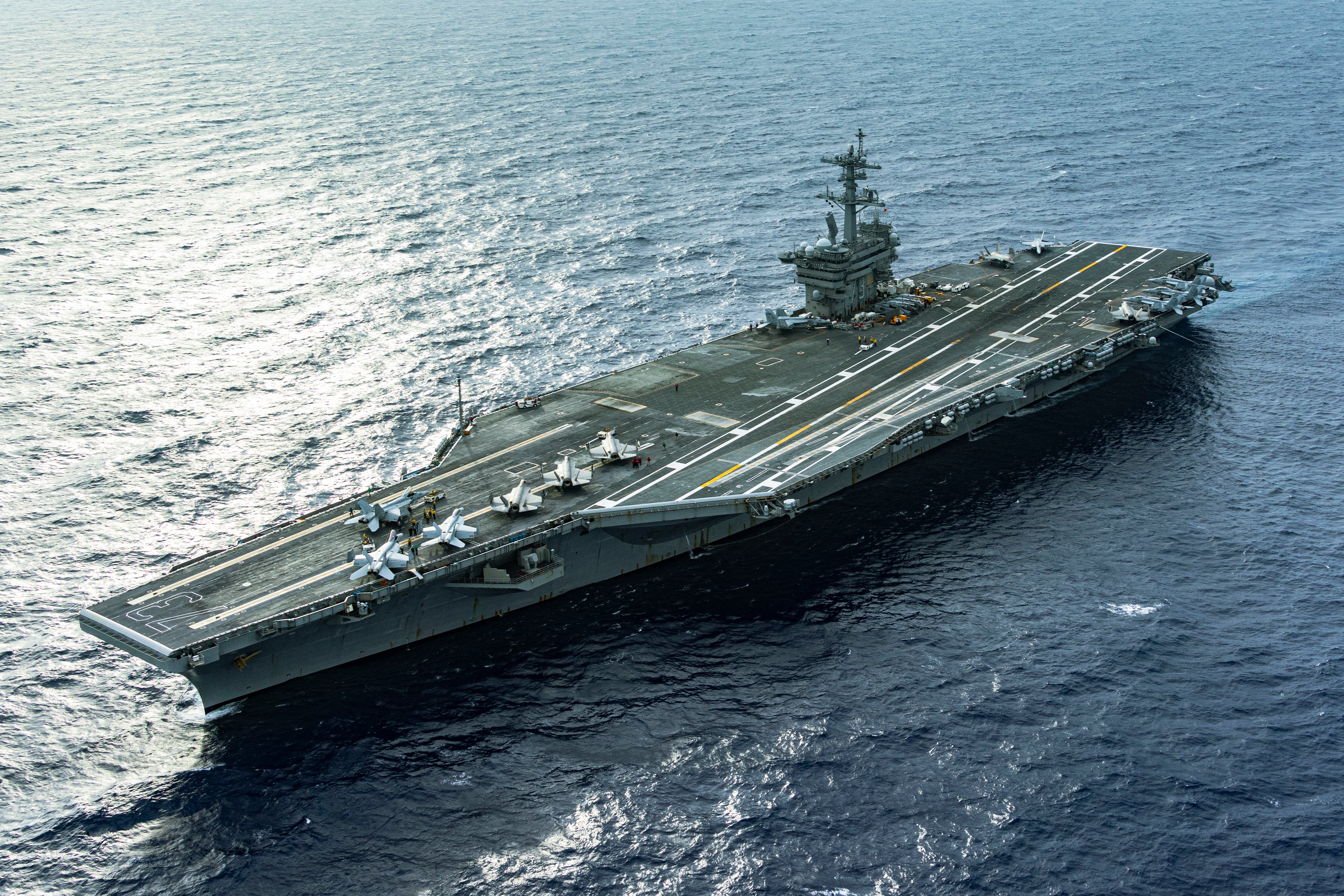WASHINGTON – President Trump's proposed 2018 budget is billed as the initial investment on his planned military buildup, but Pentagon officials are worried about the long-term costs — and whether Congress can be counted on to keep paying.
At a Defense Department press conference after the White House budget blueprint was released Thursday, John Roth, the acting comptroller for the Pentagon, acknowledged the budget office is keeping a nervous eye on the costs for increasing the force, saying they hope to see a "pattern" of growth for future budgets.
"The answer is, we're looking, ultimately, for a commitment, particularly from Congress but also from the administration, for long-term growth in defense spending," Roth told Reporters. "Seventeen is the down payment. [In] FY18, the [administration's planned] top-line is something above FY17, so the trend is good."
Pentagon planners are right to be concerned, according to defense budget experts, particularly when it comes to personnel costs.
Mark Cancian, a retired Marine officer and senior international security adviser with the Center for Strategic and International Studies (CSIS), estimates it will cost about $80 billion more than Obama administration's last budget plan to fully realize Trump's planned buildup.
That plan includes regular a Army of 540,000 soldiers, a Navy of 350 ships, a Marine Corps of 36 active-duty infantry battalions, and an Air Force of 1,200 active tactical fighter/attack aircraft, plus enhanced missile defense and cyber capabilities.
In manpower alone, that’s an additional 60,000 active-duty Army personnel, an unspecified number of additional sailors to man the 78 ships and submarines he intends to see built, up to 12,000 more Marines to serve in infantry and tank battalions, and at least another 100 combat aircraft for the Air Force, a requirement that a Heritage Foundation analysis predicts will require 40,000 more airmen to manage.
Budgeteers have found that every 10,000 people cost the military about $1.2 billion per year in pay and benefits alone. Training and operations cost even more, as much as $2 billion to $4 billion per year, varying significantly depending on the type of troops.
That money is not in the president's 2018 budget request. It asks for $603 billion, which is $18 billion more than Obama plans. Future-year top-lines are a detail expected to appear with the full request to Congress in May.
"We have to see what this buildup looks like," Cancian said. "If it’s only $18 billion a year every year, that’s barely enough to keep the force we have now."
But if the White House did move out with the build-up, it would first need Congress to approve more money to open the training and equipment pipeline for all the new trainees. Or as Army Lt. Gen. Anthony Ierardi, director of Force Structure, Resources and Assessment (J8) on the Joint Staff, said at Thursday's briefing, "with respect to training, there is physics involved."
With such costs in mind, Chief of Staff Mark Milley, for example, has repeatedly warned that a larger Army without adequate training and equipment funding from Congress would create a "hollow force."
Speaking at a Association of the U.S. Army breakfast in Washington, D.C., earlier this year, Milley said, "If you increase the end strength, you have to increase the money to go with the end strength to pay for the readiness."
Cancian said the other services chiefs are likewise worried: "You can see that nervousness out there in the services."
"Parsing his statements, I think he would rather stop the Army’s growth at 480,000 or 490,000 and put the rest in readiness and modernization," Cancian said of Milley.
Training aside, military pay and benefits that come with added troops would have to be part of federal budgets for years to come, and that would add pressure on other parts of the military's budget, said Todd Harrison, also of CSIS.
"The trouble when you add force structure is it comes with a long budget tail," Harrison said. "You’re stuck feeding those mouths for years to come, and it effectively walls off parts of your future budget."
According to Harrison, DoD already has more force structure than it can support, yielding what some hawkish lawmakers have argued is a readiness crisis.
Trump has talked about increasing the capacity of the force, which means more people, training, more day-to-day operations. Harrison said he could easily see two-thirds of any funding increase being consumed by operations and maintenance and military personnel costs.
Because O&M costs grow with inflation, Congress must add 3 percent annually just to keep pace. Old equipment gets more expensive to maintain over time, but new, technologically advanced equipment tends to be even more expensive to operate and maintain.
"An F-35 costs more per flight hour than an F-16, and so we just keep marching along that trend, so we still need more O&M funding year after year," Harrison said.
Aaron Mehta was deputy editor and senior Pentagon correspondent for Defense News, covering policy, strategy and acquisition at the highest levels of the Defense Department and its international partners.
Joe Gould was the senior Pentagon reporter for Defense News, covering the intersection of national security policy, politics and the defense industry. He had previously served as Congress reporter.









